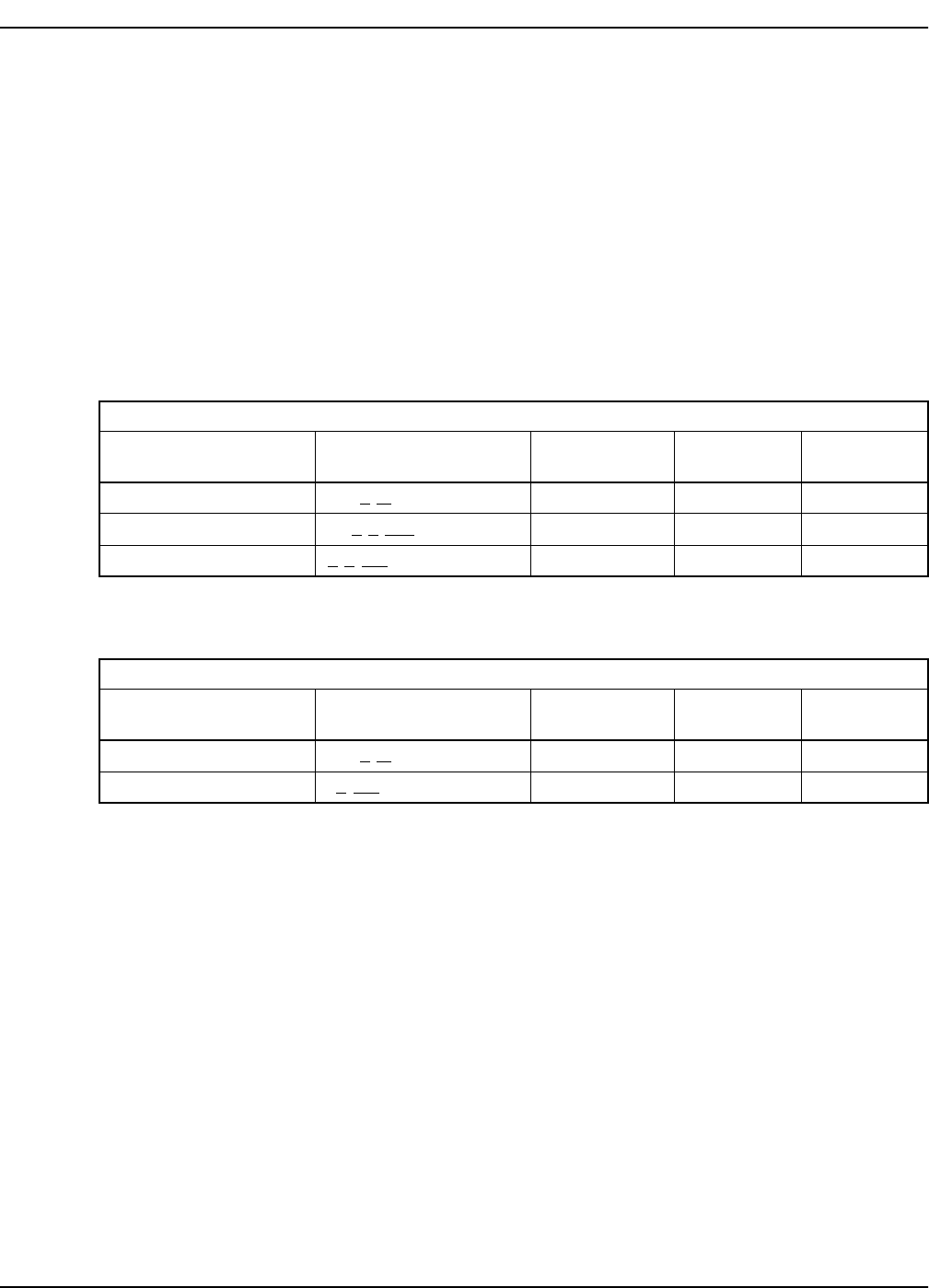
NEAX2400 IPX Feature Programming Manual
NDA-24297, Issue 1
Page 429
Least Cost Routing - 3/6-Digit L-5
Programming (cont’d)
Note: These same routes may also be listed in ASPA for SRV = OGC (Outgoing Call). In that case, these routes
may also be available via direct dial access codes. In ARNP, these access codes are not assigned to
implement the LCRS service in this command. This digit code is the first digit used when assigning the ATDP
table.
STEP 8: ARSC - LCR(S) uses only Bothway or Outgoing Only routes. For these routes, construct allow, deny,
or Toll Restriction applicable tables (Route Restriction Index RRI 2 & 3). Toll Restriction will be
applied to the available route chosen by the LCR (S) selection. Therefore, if a user dials a long distance
number and is restricted in Toll Restriction for a DDD and the only available route is a DDD, the call
will be denied. Toll Restriction acts upon the LCR (S) selection. Also, remember to allow route 31, the
LCR(S) Flag Route to all RSCs. Do not toll restrict the Flag route.
STEP 9: AMND - Assign the Maximum Necessary Digit (MND) the system must translate for a proper route
selection. List the following type of dialing sequences.
Note: The digits underlined are to be listed in the DC parameter. Overseas or Operator-assisted calls should be
listed with an MND that equals the calculated number of necessary digits. Special dialing sequences such
as 411 with an MND = 4 should also be listed.
Note: The digits underlined are to be listed in the DC parameter. Overseas or Operator-assisted calls should be
listed with an MND that equals the calculated number of necessary digits. Special dialing sequences such
as 411 with an MND = 4 should also be listed.
STEP 10: AFRS - List the dialing patterns in groups that will be served by a specific sequence of routes. For
example, consider the following dialing patterns:
9-1-617, 9-1-413, 9-1-207, 9-1-203, 9-1-603.
Each of these area codes exist in the Northeastern United States. From New York City, it may be
determined that the least expensive way to place any of these calls is by a Band 1 WATS, then BAND
5 WATS, then DDD. This determination of routes is labeled as an Outgoing Pattern Route or OPR. In
AFRS, program the Tenant, Route Number (Flag Route 31), The Number Code or dialing patterns, and
the OPR to be chosen when these digits are dialed. (For other OPRs, use the DELETE key.)
STEP 11: AOPR - The AFRS command designates the dialing sequence and the OPR to be selected. The AOPR
defines the routes and in what order these routes will be selected. Assign the following:
TDPTN No. (TDPTN) - Time of Day Pattern Change. If an AFRS assignment, different OPRs will be
required as a function of time. Designate 1-7 for the Time-of-Day Pattern Change Number (TDC NO.)
to which this OPR is assigned.
N + DIALING (N = 2-9 P = 0 OR 1, X = 0-9)
CALL TYPE
DIGITS DIALED
Note
DIGITS
NEEDED
MND TOLL
Local Calls 9-NNX-XXXX 9-N 8 0
Near Distant Calls (1+) 9
-1-NNX-XXXX 9-1-NN 9 1
Long Distant Calls 9
-1-NPA-NXX-XXXX 9-1-NP 12 1
WITHOUT N + DIALING (N = 2-9 P = 0 OR 1, X = 0-9)
CALL TYPE
DIGITS DIALED
Note
DIGITS
NEEDED MND TOLL
Local Calls 9-NNX-XXXX 9-NN 8 0
Long Distant Calls 9
-NPA-NXX-XXXX 9-1-NP 11 1
